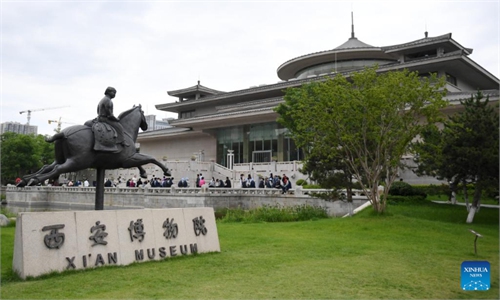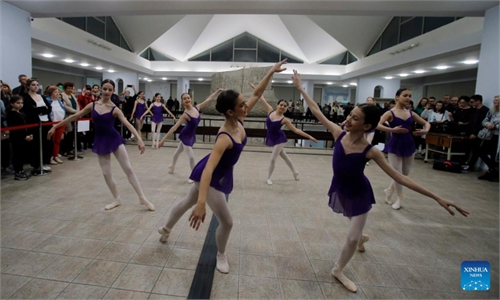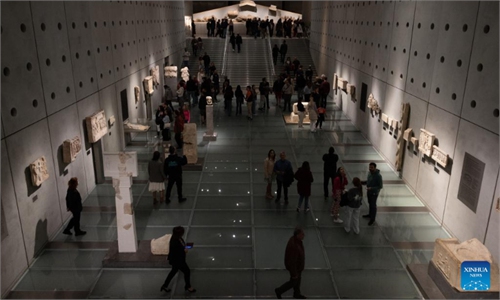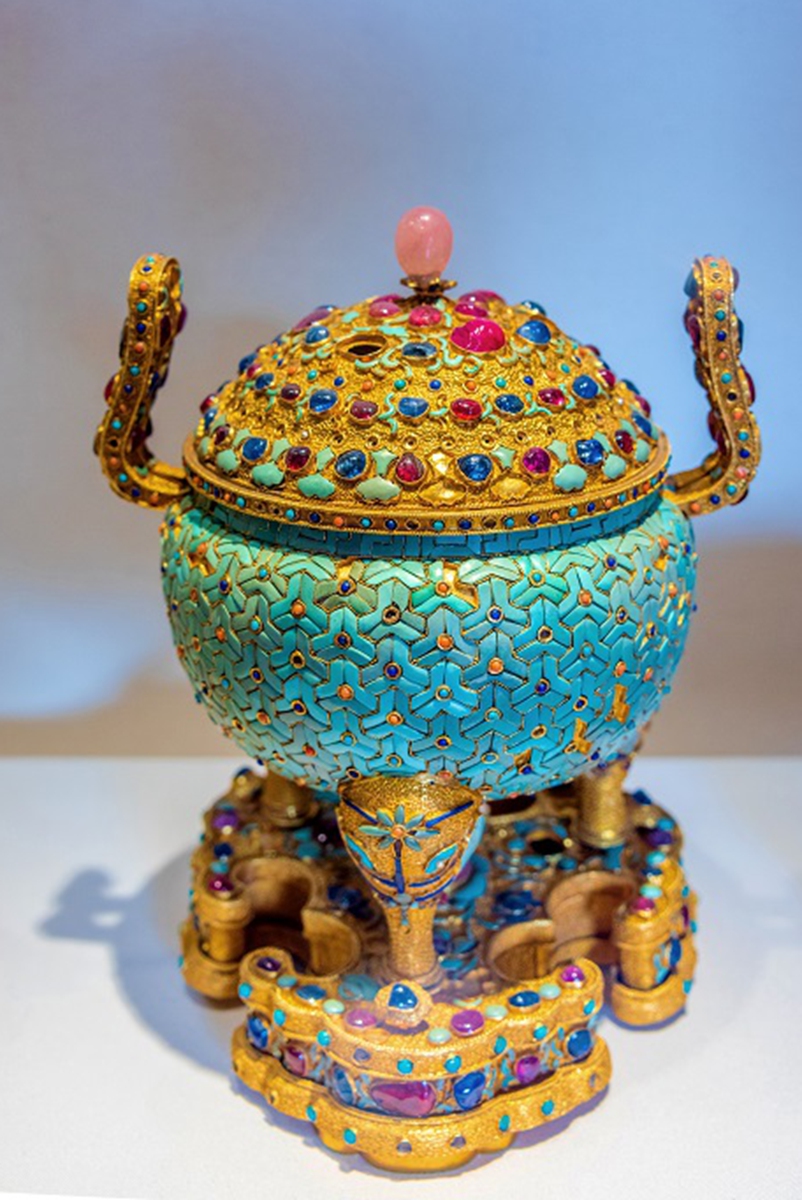
A Qing Dynasty gold inlaid gemstone stove stored at the Palace Museum Photo: VCG
Editor's Note:China is an ancient civilization with a history of multiple millennia. Through the decades, the archaeological finds unearthed and preserved with silent care tell the magnificent story of the economy, technology, life and art of Chinese dynasties coming all the way from the past.
The thousands of museums across the country, with their rich collections and exhibits of these archaeological finds, are like stars lighting up the Milky Way that is China's history.
As International Museum Day 2023 approaches, the Global Times introduced 10 museums from across the vast breadth and width of China over 10 issues, exploring the parts of history they display that contribute to the nation's diversity and continuity.
Now, in this final issue, the 10 museums unite as one to offer a peek into this civilization.
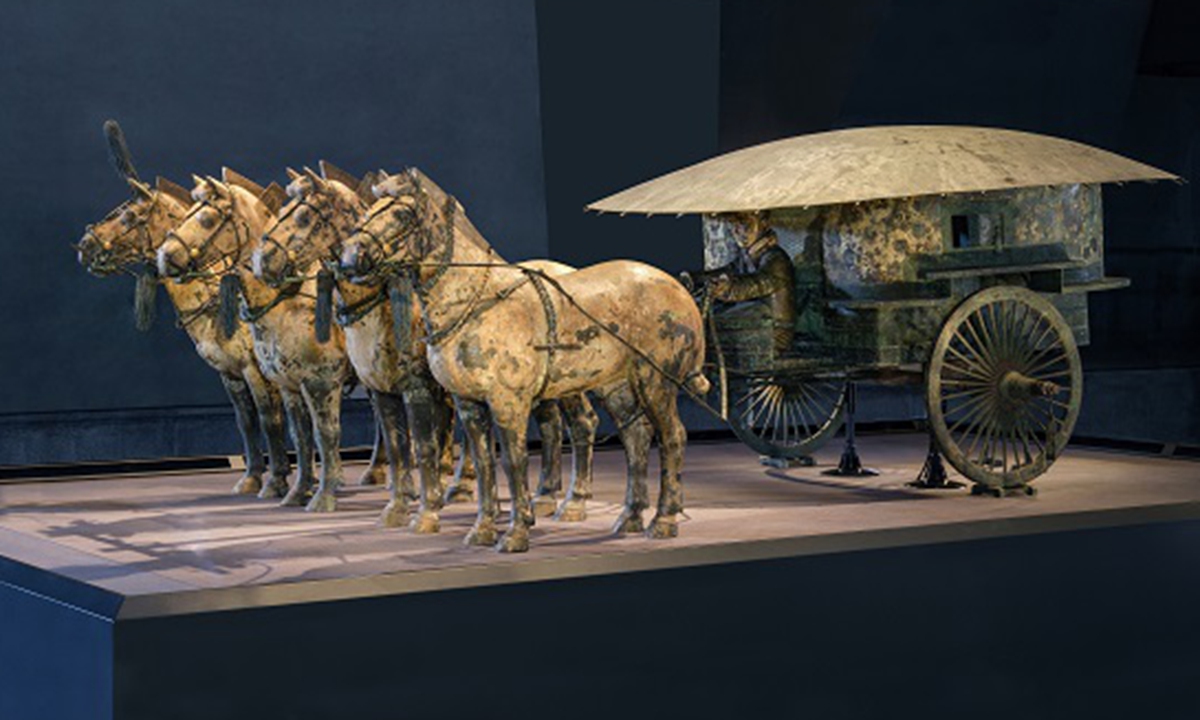
A Qin Dynasty bronze chariot stored at Emperor Qingshihuang's Mausoleum Site Museum Photo: VCG
Erlitou Site Museum of the Xia Capital: Revealing 'a land of etiquette' An upright bronze figure representing a religious official stored at the Sanxingdui Museum Photo: VCG
The Erlitou Site Museum of the Xia Capital in Luoyang, Central China's Henan Province, is rich with displays of the culture of China's first recorded dynasty - the Xia Dynasty (c.2070BC-c.1600BC).
The Erlitou Ruins in Luoyang are about 3,500 to 3,800 years old, which places them in the time period of the late Xia or early Shang Dynasty (c.1600BC-1046BC). The current predominant theory among archaeologists is that the site was once a capital city during the middle to late Xia Dynasty.
Over the past few years, archaeologists have excavated more than 10,000 items from the 40,000-square-meter dig site, such as bronze wares, evidence of China's earliest urban road network and the remains of two-wheeled chariots.
The value of the Erlitou site lies in how it shows that the Chinese nation has always been a "land of etiquette," Wang Wei, chief expert of the national Project to Trace the Origins of Chinese Civilization and president of the Chinese Society of Archaeology, told the Global Times, adding that if the Qin (221BC-206BC) and Han (206BC-AD220) dynasties were the peak of China's multi-ethnic cultural diversity, then the Xia period was the beginning.
Yinxu Museum: Hometown of ancient characters
The Yinxu Museum in Anyang, Henan Province is one of China's oldest archaeological sites. Yinxu, or the Yin Ruins, originally excavated by Chinese archaeologists in 1928, was once the city of Yin, the last capital of the Shang Dynasty. The inscriptions on the oracle bones discovered within the ruins are some of the oldest Chinese characters found to date, making the site known as the "hometown of China's ancient characters."
"Discovering and pinpointing the Yinxu site was the starting point and foundation of exploring the cultures of the Xia and Shang dynasties, and tracing the origins of Chinese civilization," said Zhao Qingrong, the curator of the museum, adding that because of the Yinxu Ruins, China's archaeological history can be traced back to the Shang Dynasty. More importantly, with the Yinxu Ruins as the fulcrum, a time-space map of Xia and Shang archaeological culture has been constructed, providing an important starting point for exploring earlier civilizations.
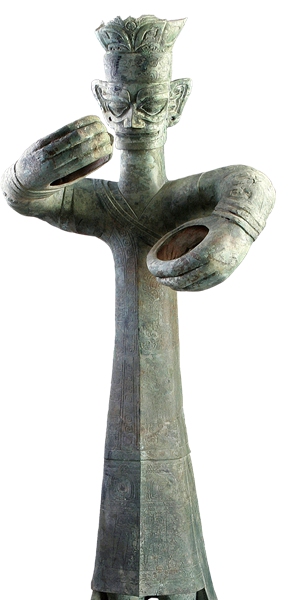
The Sanxingdui Museum in Southwest China's Sichuan Province mainly displays the stunning yet mysterious and unique cultural relics found during excavations of the famed Sanxingdui Ruins site, which originated from the Ancient Shu Kingdom around 1250BC, which coincides with the Shang Dynasty in the Central Plains. The never-before-seen relics unearthed at the site include a gold mask, a bronze mask with bulging vertical eyes, a more than 2-meter-tall bronze standing figure and a bronze sacred tree, making the site one of the world's greatest archaeological finds of the 20th century.
Lei Yu, curator of the museum, told the Global Times that the Sanxingdui culture has become a remarkable symbol of China. It extensively absorbed the bronze casting techniques, ritual systems, decorative aesthetics and jade tradition from the Xia and Shang dynasties in the Yellow River Basin. The social systems, techniques and specific utensils of the Sanxingdui culture show a profound connection between the Shu civilization and other ancient civilizations in China.
Emperor Qingshihuang's Mausoleum Site Museum: Presenting the 'Eighth Wonder of the World'
Emperor Qingshihuang's Mausoleum Site Museum is built around the Mausoleum of Qinshihuang, China's largest and most opulent imperial tomb as well as a "gold card" for traditional Chinese civilization. Located at the northern foot of the Lishan Mountain, 35 kilometers northeast of Xi'an, now capital of Northwest China's Shaanxi Province, the mausoleum of the first emperor of the Qin Dynasty (221BC-206BC) was constructed by 700,000 laborers over a period of 39 years, according to Records of the Grand Historian, a monumental history book of ancient China compiled about 2,000 years ago. The Terracotta Warriors discovered at the tomb are known as the "Eighth Wonder of the World," and have become a symbol of Chinese culture abroad, with many countries eagerly seeking to put them on display through joint exhibitions to showcase their diversity and mystery.
For decades, Chinese archaeologists have been tasked with the tough mission of decoding the secrets of the mausoleum and helping the world better understand this awe-inspiring feat of engineering.
Tian Jing, a deputy curator at the museum, said Qin culture had a significant impact on the formation and evolution of Chinese civilization as the dynasty established China's first centralized government with power over an entire unified nation. Qin culture embodies unique philosophical concepts, humanistic spirit, and moral standards that represent a crucial reflection of the political, economic, cultural and military systems of a united empire.
Hunan Museum: Peak of silk culture
The Hunan Museum in Changsha, Central China's Hunan Province, hosts more than 180,000 cultural relics. A majority of those relics were unearthed at the Western Han Dynasty (206BC-AD25) Mawangdui Tomb, one of China's most pivotal archaeological discoveries of the 20th century.
The Silk Plain Unlined Gauze Gown, a gown that is so sheer it can be folded up and placed inside a matchbox, is the star of the museum's collection. The gown is the world's lightest early human clothing and represents the peak of the Western Han Dynasty's silk culture.
The silk gown reveals the incredible silk craftsmanship that has made China a star of the cultural exchanges along the ancient Silk Road. The country's silk products became major sought after items as they made their way west.
Besides the silk gown, the Hunan Museum has many ancient texts covering subjects like astrology and philosophy, revealing that China achieved high-level cultural civilization as early as the Han Dynasty.
Oriental Metropolitan Museum: 'Transition station' to spread art, religion
A celadon-glazed pot with a tray-shaped mouth decorated with pictures of immortals is one of the most valuable treasures at the Oriental Metropolitan Museum, or the Six Dynasties Museum, in the heart of Nanjing, East China's Jiangsu Province. The museum explores the long history of China's Six Dynasties Period, from the early Three Kingdoms (220-280) to the end of the Southern Dynasties (420-589).
During that time, the city of Nanjing served as a "transition station" to spread art, religion and ideas from the western regions and the Central Plains to the southern part of China.
At the same time, the region's geo-cultural characteristics, different from the northern part of China, helped make the Six Dynasties Period become a peak for the humanities such as art and literature.
Sui-Tang Dynasties Grand Canal Cultural Museum: Eliminating north-south barriers
Speaking about China's Grand Canal, many may think about the current one connecting East China's Hangzhou and the capital Beijing, but seldom know the fact that originally the Grand Canal made a turn through the city Luoyang in Henan Province during the Sui Dynasty (581-618).
The museum in Luoyang recreates scenes of the transportation of goods from the economic center of Jiangnan (Southeast China) to the political center of the Central Plains. This waterway eliminated the barriers between the political, economic and cultural centers in the north, south and Central Plains, and geographically united the country, laying a foundation for the following prosperity of the Tang Dynasty (618-907).
Zhejiang Provincial Museum: Neolithic cultural ingenuity
The Zhejiang Provincial Museum in Hangzhou, East China's Zhejiang Province, was recognized by China's State Administration of Cultural Heritage as a "national first-class museum" in 2008.
The museum is dedicated to the late Neolithic Liangzhu Culture. A jade cong, the finest and largest ancient ritual object unearthed from the Liangzhu culture, is the museum's stellar item.
The Liangzhu culture site is one of the major investigation sites for China's national Project to Trace the Origins of Chinese Civilization.
The site reveals ancient Chinese people's cultural ingenuity when it comes to art, agriculture and project engineering during the Neolithic period. In 2019, the Liangzhu culture was listed as a UNESCO World Heritage Site.
Besides the Liangzhu culture, the museum also houses relics from other ancient cultures like those found at the 7,000-year-old Hemudu site. They reveal a thriving cultural landscape south of the Yangtze River.
Maritime Silk Road Museum of Guangdong: Maritime Silk Road witness
In Jiangyang, South China's Guangdong Province, the Maritime Silk Road Museum of Guangdong (MSRMG) is home to the Nanhai No.1, a Song Dynasty (960-1279) shipwreck that was discovered in 1987.
The MSRMG is a museum where visitors can get right up close and watch archaeologists excavate the Nanhai No.1.
The Nanhai No.1 carried numerous relics, especially Chinese porcelains. It is an example of China's trade in goods and culture along the Maritime Silk Road 800 years ago.
As China's first museum dedicated to underwater archaeology, the MSRMG is a window to introduce China's "underwater" civilization to the public.
Over the years, the museum has launched a research hub to focus on the creative utilization of discovered underwater sites and launching creative cultural products to engage with the public.
Palace Museum: Embodiment of uninterrupted civilization
In the year 1406, on order from Ming Dynasty Emperor Zhu Di, also known as the Yongle Emperor, construction began on one of the greatest architectural complexes ever built in Beijing: the Forbidden City. In 1925, this imperial palace was opened to the public as the Palace Museum.
Now one of the world's top museums, it welcomes nearly 20 million visitors a year, and hosts a total of nearly 1.8 million treasures. Those treasures, from irreplaceable red-glazed vases to the world-famous painting Along the River During the Qingming Festival and enormous magical clocks from Europe, are not only an embodiment of the breadth and grandeur of China's uninterrupted civilization, but also show a fusion of different cultures coming together.
In modern times, the museum is also transforming to build its international status. Its successful stories include being a pioneer museum for making cultural and creative products, and active cooperation and exchanges with museums from different regions in China and around the world.
